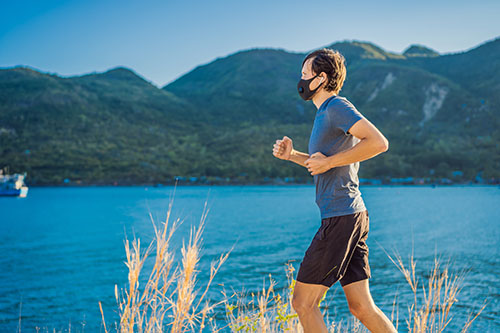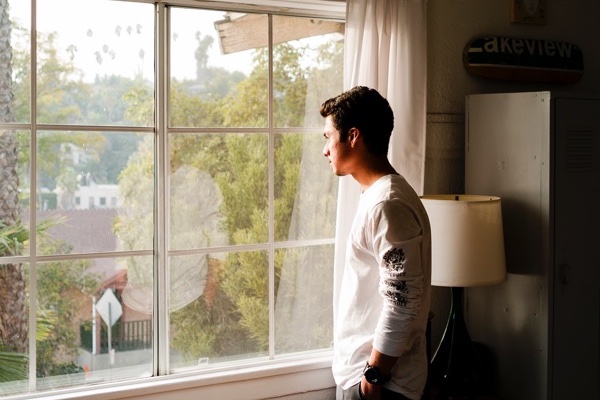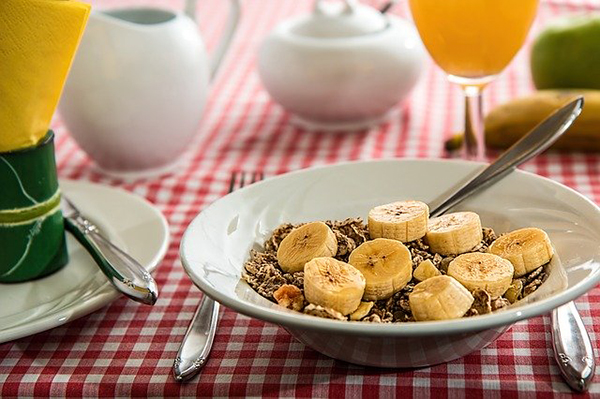Outdoor exercise during COVID-19
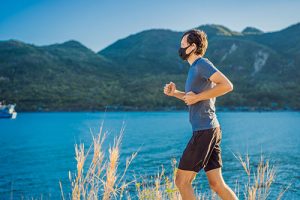
Are you confused about getting outside for exercise during this trying time of COVID-19? If so, you’re not alone. Like so much about the current situation, the advice about exercise right now can be confusing.
As a sports medicine specialist, I like to think physical activity is an elixir for better health and should be prescribed to most everyone. It’s one of the most effective treatments for multiple health issues (like cardiovascular disease, hypertension, depression, obesity, diabetes and others), and even moderate exercise has been shown to boost the immune system. Exercise is a medical prescription everyone should follow. However, the long-term benefits of exercise need to be pursued while also being smart about the serious risks of exposure to the virus.
As part of our state’s Stay Home, Stay Healthy order, many businesses including gyms are closed or limited in operations. Therefore, exercise needs to be done primarily at home or outside. Yet, many options are unavailable or restricted—like parks, beaches and hiking trails that may be closed to facilitate social distancing. In addition, the WHO and CDC are now recommending universal wearing of masks when leaving your home, but a mask can make exercise more difficult. All of this information can be hard to sort through.
So how do we exercise—while exercising caution—during the current public health crisis?
Is it safe to exercise outside?
Let’s start with what we know. We know that the virus that causes COVID-19 is spread through droplets released by infected people, such as when they sneeze or cough—and possibly even when talking or breathing. We know these droplets can hang in the air, especially in enclosed spaces. We also know people breathe more deeply during aerobic exercise. A person who is infected may have no symptoms and not know they are contagious. For these reasons, it is of the utmost importance to keep your distance from people you don’t live with—both to protect yourself and to help flatten the curve.
There is also much we do not know yet—but we can apply some common sense. When virus-carrying droplets occur outdoors, it is reasonable to think the concentration will be lower due to the open space. It is possible this would make the “viral dose” you might be exposed to less dangerous. You can lower your risk outdoors even more by maintaining a social distance of greater than 6 feet. One white paper (not yet peer reviewed) recommends staying out of the direct path or lane of people exercising 30-60 feet away, to avoid catching particles in their slipstream.
If you are running, walking or cycling, there is a risk of moving through a coronavirus droplet cloud—however, my assessment is this risk is small overall, so long as you follow the social distancing rules and avoid crowded areas. My recommendation for safety is to maintain a distance greater than 6 feet if you or others are running or cycling outdoors.
Do you need to wear a mask when exercising outside?
Masks are now required in Washington outside the home, and are a good idea for minimizing risk. However, if you keep sufficient distance from others, you can pull the mask down for easier breathing while exercising. The CDC has information on wearing a cloth mask to slow the spread of COVID-19.
Remember, a cloth or paper mask plays the same role as covering your cough or sneeze: it protects those around you. And since any one of us may be infected with the coronavirus and not have symptoms, wearing a mask when exercising near others can help slow the spread of this disease.
Key takeaways The risks of exercising outside can be minimized if you follow some guidelines:
- Avoid crowded areas.
- Head outside during slower times. Depending on your area, these may be early morning, during the day when others may be inside working, or in the dinner hour or evening.
- Cover your mouth and nose with a light mask, if feasible, while you exercise.
- For vigorous workouts, try cooler hours, when a mask might be more comfortable (or perhaps unnecessary, if fewer people are out).
- Keep your distance from others. Aim for more than 6 feet if you are walking, running, climbing stairs or cycling, or around others who are pursuing such activities.
- Avoid touching your face during your workout.
- When you return home, take off your gear/clothes and wash your hands thoroughly before touching your face.
- Avoid touching household items (knobs, counters, fridge door, etc.) until you have cleaned your hands.
- If you wear a cloth mask, clean it in a washing machine regularly.
There is risk in life and everyone needs to decide how much they are willing to accept. I think exercise is an important part of life, and while exercising outside has risks, these can be minimized.
I wish you the best in finding ways to maintain your health through exercise, while also taking precautions that make sense.
Read more about PacMed’s response to COVID-19.
Tips for Protecting Eyes While Working From Home
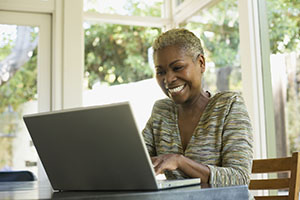
Anyone else feeling some major eye fatigue from all your at-home screen time lately? From all your social interactions being over Zoom, to working from home, to spending hours bingeing TV shows, we’re all getting more than our fair share of screens during quarantine. Dr. Marie Kernie, an optometrist at Pacific Medical Centers, answered questions regarding keeping eyes healthy — during this time and beyond.
For eye wellness tips for working from home, can you share some proactive advice to maintain healthy eyes?
To keep your eyes healthy, it is important to ensure that you have a nutritious diet, which includes food that is especially good for the eyes. These include green leafy veggies, oily fish, eggs, legumes, nuts, and beans. You should be wearing UV eye protection that blocks at least 99 percent of both UVA and UVB light rays.
Additionally, there are many preventative steps that to minimize eye strain, especially during this time of working from home. I recommend trying the following:
- Make sure that your computer screen is level to the top of your eyes
- If you get dry eyes, ensure that you’re drinking enough water, and use artificial tears for additional moisture (not red-eye or allergy drops)
- Get up every two hours and take a 15-minute break from screens
- Choose a comfortable and supportive chair
- Try to avoid glare from windows or indoor lights
- Don’t forget to blink — not blinking enough can cause red, irritated, dry eyes
- If you have prescription eyewear, be sure that you’re wearing them
What should people know about blue light – can it actually be good for us?
Studies have shown that high amounts of blue light do harm the eyes. However, they have also shown that even with our increased use of blue light-emitting devices such as cell phones and computer screens, the exposure is still well below levels to cause damage to our eyes. In fact, blue light is actually beneficial to us during the day. It boosts alertness, helps memory and cognitive function, and elevates overall mood. For this reason, we at Pacific Medical Centers do not currently recommend blocking blue light with glasses, as blue light can be beneficial.
At night however, this same blue light can disrupt the natural sleep-wake cycle (circadian rhythm) and in turn trigger your body to stay awake. It is recommended to avoid personal electronic digital devices 2-3 hours before going to bed or setting devices on night mode.
If we can feel our eyes straining but it’s a long time before we can get in to see an eye doctor because of the quarantine, what can we do to help ourselves?
It is important to be mindful of eye strain when working on computers and give yourself regular breaks. This is why at Pacific Medical Centers, we recommend the 20-20-20 rule. Specifically, for every 20 minutes you look at a screen, look away for 20 seconds at something that is 20 feet away.
Are those drugstore readers actually helpful, or could they do more harm than good?
Drugstore readers do not ever damage the eyes and do work for many people but not everyone. This is because people often require a power that is not available at the drug store.
Even if drug store readers help your vision, it is still important to have regular eye exams. Vision problems you may not be aware of such as glaucoma or cataracts can be diagnosed early to help minimize damage to your vision.
Helping teens in the time of COVID-19

As we parents and caregivers seek to find answers about living with COVID-19, we also may find ourselves needing help with the teens in our lives. They likely have questions and concerns that are unique to their stage in life, and we want to support them in ways that connect with where they are at.
More than big children, not quite small adults
It’s important to first distinguish that teens are unique from children in several ways. For starters, teens have awareness of what is happening in the world—and seek and exchange information with their friends, the Internet and other media. It’s vital to be factual and honest with them about what they’re hearing and seeing, not pretend it doesn’t exist.
At the same time, we need to begin treating them as equals: Ask questions and be curious about their views, rather than projecting our own fears or judgements onto them. They have independent minds and points of view. It’s important to not assume that we know what they’re thinking. Engaging in this way can help guide critical thinking for teens, which is essential to their emotional processing.
Let’s tackle this together
Be willing to say, “I don’t know, but let’s look for the answer together.” Similarly, rethink the idea of being “a rock,” that stable, reliable, in-control person for them. A position of constant strength may seem like the right way to create stability for our children, but for teens this can make you seem distant. We need to be human to validate the uncomfortable emotions your teens are having. When you are transparent about how you’re feeling, your kids take that as permission to express themselves too. Practicing vulnerability actually creates the kind of stability kids need from authority figures.
Be sure to validate your teen’s thoughts and emotions by listening closely, nodding your head and saying things like, “I can see how that would feel” or “That makes sense” and “Yeah, I hear what you’re saying.” By using validating affirmations, we get away from changing our kids’ minds and move alongside them, admitting that it’s tough and that’s ok. When kids are afraid, they need to be heard more than corrected.
Help teens seek emotional balance
During this time, we all may feel our emotional balance veering off center. In your household, try to walk the middle path between the two sides of “It feels scary/our world is so different right now” and “There are good things happening, things that are working and growing.” Acknowledging both emotional realms of fear and hope helps steer the conversation toward reality, rather than propaganda.
End and begin each day with each member of the family sharing a few things they can be grateful for, something they learned. Studies show spoken gratitude creates resiliency, especially during a crisis.
Help teens stick with social distancing
Adolescence is the perfect storm when it comes to social distancing. Teens are differentiating from parents, forming important face-to-face social and romantic connections and coming up with unique ideas and beliefs. Teens feel invincible. And because their brains are still developing, logical judgement often takes a backseat to emotional and impulsive behavior.
All of this is normal, and yet at odds with what’s going on in our world today. A few things we parents can do to help them stick with social distancing measures:
- Put yourself in their shoes, be sympathetic and express your sympathy to your child. Allow them to grieve the loss of connections and real-life social experiences.
- Collaborate with your teen as they find ways to bridge the gap between what is possible and what is impossible during this time. Brainstorm creative ways to be connected with friends while being physically distant. Lean on their adept knowledge of technology.
- Help them learn empathy, a desired trait in a healthy adult. Feeling empathy and taking action helps teens feel empowered. Show them that they’re potential “delivery systems” of the virus to older people like grandparents or teachers. Help them practice empathy by calling their grandparents more often or writing favorite quotes to residents of nursing homes. The more real that vulnerable populations become to younger people, the more likely they can see their role in “saving the world.”
Create a home field advantage
Watch your own media consumption so you can guide your kids to turn off their devices. Constant exposure to news of doom and gloom inevitably creates more anxiety and depression for yourself and them. Try turning off your phone and placing it in a shoebox in the middle of the room along with their phones. Turn on music, not the radio, filling the space with the different emotional experiences of a home, instead of a newsroom.
Focus on the aspects of your lives you do have control over and de-emphasize the aspects of the world where there is no control. Explore these ideas:
- Create a daily schedule that includes exercise, outside time and jobs, even if the jobs are not essential. Also make sure bedtime and when you get up are as consistent as possible. Studies show that consistent tasks, routines and daily maintenance help people cope through a long, slow crisis much better than rumination, excessive sleep and boredom.
- Ease up on academic growth and teach life skills: budgeting, cooking, sewing, gardening, music, construction, auto maintenance, art. Teens need these essential life skills, and they’re not usually taught in school. Right now is the perfect time to fill in their “educational gaps.”
Surviving something like this doesn’t just mean avoiding the virus, washing hands and social distancing. The real battle is in our minds and hearts. The choice exists for us to live in constant fear and anxiety or to see this as an opportunity to build inward with our families and ourselves—to not miss the greatest opportunity we’ve ever had to try something new, to live differently, more slowly, more simply.
“Pain is inevitable, suffering is optional.” —Haruki Murakami, author
Read more about PacMed’s response to COVID-19.
Addressing mental health during social distancing

With all the additional stresses associated with the COVID-19 pandemic — financial, relational, and more — building habits and strategies to help mental health is important. Alex Majcher, a member of the behavioral medicine team at Pacific Medical Centers at its Federal Way clinic, spoke about how to build some of these strategies: what to include in your routine, what to avoid, and how to try to make the best out of an extremely difficult collective situation.
What are some tips on balancing news intake in a way that doesn’t heighten anxiety?
You should limit the amount of time each day you watch or listen to the news. Don’t leave it on all day as background noise, and don’t watch first thing in the morning or right before bed. If you get your news by reading it on your phone, the same applies; don’t open up your news app as soon as you wake up, and don’t read it in bed trying to fall asleep.
Additionally, if you struggle with anxiety around the news, focus on local outlets. Local news tends to present more succinct information rather than having panels that mix in a lot of emotionally charged opinions. This also helps you to focus on what is happening in your reality and can prevent you from feeling overwhelmed by what is happening all over the world.
What are proactive steps to take to ensure you’re being mindful of your mental health during social distancing?
If you are working from home, it is important to keep a routine similar to what you would have if you were still going to your office. Ensure that you’re maintaining a regular sleep schedule. When you get up in the morning, do all of the things you would have done on a regular day: take a shower, have your morning coffee and/or breakfast, get dressed, etc.
You also can try and find safe ways to help others. As social beings, we have the instinct to contribute to the well-being of the group, which is why it feels good to contribute to others’ well-being. During social distancing, this doesn’t need to go away — there are numerous ways to help others. Reach out to people who may be lonely by phone, or teach someone who doesn’t know how to set up and use social media so they can connect with others as well.
Additional proactive steps include:
- Do things that give you the opportunity to feel like you have achieved something, no matter how small it may seem. Do a project you’ve been meaning to complete at home, finish a puzzle, learn a new hobby or skill. Set a (realistic) goal for each day and work toward it.
- Make a list of things you can do at home that you enjoy, and schedule a time for them throughout your day.
- It doesn’t have to be intense, but get moving: a walk around the block or yoga will do.
- Spend a little bit of time outside each day, no exercise required! This will help prevent feelings of being boxed in or restless, which is common for people to feel these days.
What are the possible impacts of social isolation for those that live alone?
For those who live alone, social isolation can be difficult to experience. When you live alone, you’re already lacking a source of social support. A lot of people have a “work family” and are used to experiencing interaction outside of the home. This change can result in increased loneliness and boredom relative to people who live with roommates or family members.
Everyone’s anxiety is heightened now because of the pandemic and the impacts on their lives due to social distancing. People are concerned about their health and the health of their loved ones, and are afraid for their jobs and financial well-being. There is a lot to be anxious about right now, and being alone can exacerbate the anxiety because it’s easy to get stuck in those thoughts and worries.
All of the things listed above are risk factors for depression. Additionally, financial challenges also are contributing more to this concern for those living alone because they don’t have another person contributing to household expenses. Other symptoms include feeling unmotivated, thoughts of harming yourself or death, feelings of worthlessness or hopelessness, and fatigue. I recommend you seek medical attention right away if you are experiencing any severe symptoms.
What are the ways social distancing might actually be beneficial to mental health?
During this time of social distancing, it gives us time to recharge, and to take time out from our busy and/or regimented lives, allowing us to get the rest we need.
This is an opportunity to form connections with people you may not have known well before because you don’t see them in your everyday life. I have spoken with people I haven’t heard from in years when they reached out because of this. We are being forced to slow down and simplify our lives and it’s an opportunity we didn’t have before.
Along those same lines, I’m sure every one of us has that one thing at home that we have been “meaning to do” but never had the time — that artwork you wanted to create, the cabinet door to fix, that book you wanted to read, or game you wanted to play with your kids: Now you have the time!
What is the importance of unwinding and taking time for yourself?
Your mental health is connected to your physical health. Taking time to relax promotes physical well-being as well as mental and emotional well-being. When you feel high-stress for an extended period of time, you are at higher risk for physical illness. It’s important to take care of yourself by getting restful sleep and doing relaxing activities (i.e. reading, yoga, stretching, taking baths).
Any tips on online or remote therapy? Is it as effective/are there ways to try to make it more effective? The benefits of online and remote therapy really depend on the reason for treatment and the personality of the patient. Virtual therapy is a really great tool to reach people who are unable to access in-person therapy because of social distancing, and overall because of living in a rural area, homebound by illness or lack of transportation.
I have also found that remote treatment has been the therapy of choice for those who have high social anxiety, and in my opinion, if that is the only barrier to seeking treatment, this is a fantastic option.
Tips to get the most out of virtual therapy include:
- Video is better than the telephone, and the telephone is better than texting. I know texting for therapy may be an appealing option for people today; in my opinion, text may be good for reminders of learned/practiced skills as a supplement to in-person or virtual therapy, but not a replacement.
- Make sure when you’re talking with your therapist, you’re in a quiet environment with no external distractions. I recommend a bedroom, quiet den, or even a backyard.
Living Well Alliance spotlight
Hear how the Living Well Alliance supports employee wellness programs. Christy Goff, registered dietitian, talks with iHeart Radio host Lee Callahan about many nutrition myths and heart-healthy recommendations. Click to listen to this iHeart Radio podcast!
Eating Right With PacMed • 28 min
See what LWA is up to this spring. We host monthly webinars that companies can join, offer popular “Yoga at Work” classes, plus have nutrition classes focused on specific topics, like bone health. Learn more about Living Well Alliance classes, webinars, screenings and other services and how we’ve adapted to COVID-19 stay home orders.
The Living Well Alliance is run by Pacific Medical Centers. Call us today at 206.621.4419 for more information or email LivingWellAlliance@pacmed.org.
PacMed and Living Well Alliance are trademarks of Pacific Medical Centers.
Refocus parenting
Submitted by a PacMed team member
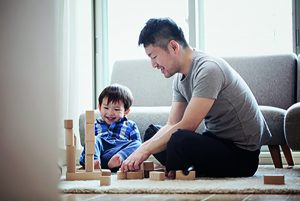 One of the most challenging roles I’ve held as an adult is being a mother to my sons. I take it seriously, thanks to the example set by my mother. She was loving, attentive and committed, which taught me to value parenting my little people.
One of the most challenging roles I’ve held as an adult is being a mother to my sons. I take it seriously, thanks to the example set by my mother. She was loving, attentive and committed, which taught me to value parenting my little people.
I believe focused, uninterrupted time is key. In the midst of the daily routine, build in connecting “moments.” These can be in the mornings before day care, over family dinner or throughout the weekend. Our family is fortunate to have a yard, and the kids have a couple of small plants they must water every day—a perfect reason for us to explore and play outside. In these moments, my husband and I allow our sons to open up and share from their perspective.
We unplug so we can fully engage with our sons. We ask probing questions about emotions and check in on the day’s highlights and challenges. By listening, we encourage and model positive behaviors. Conversations with kids can be surprisingly rich—they just need space to share themselves with us.
Remember, each child is an individual. They vary in interests, strengths, opportunities, emotions and how they respond to environments and people. As kids explore and find their way, set guidelines and boundaries that are appropriate. As kids grow and their worldview expands, do community outreach together (garbage cleanups, fundraisers, walks for a cause, volunteering, etc.) to teach them about social issues in a relational way.
In my humble opinion, you cannot show children enough love and encouragement. We are an affectionate family. We tell our children how important they are to us and that we will always have their backs—no matter what. The reward is seeing our children become strong contributors to life and the world around them.
IDEAS TO EXPLORE…
- Build focused, uninterrupted family time into each day
- Listen attentively and openly when your child shares
- Buy a small plant for your child to water each day
- Find support in a parent’s group
- Take time to talk with your child’s doctor
Nutrition: Fantastic fiber
 Looking for a new spin on meal prep? One way is to focus on fiber. You’ll suddenly find your plate crowded with colorful vegetables, new grains and tasty spices!
Looking for a new spin on meal prep? One way is to focus on fiber. You’ll suddenly find your plate crowded with colorful vegetables, new grains and tasty spices!
Besides turning your approach to dinner upside-down, increasing your dietary fiber has positive effects on the prevention of many health complications like high cholesterol, high blood sugars, colorectal cancers and poor digestive health. A high-fiber diet is also often lower in calories and can increase feelings of fullness after meals—meaning, your new high-fiber cuisine also can promote a healthy weight!
What is fiber?
Fiber is a type of indigestible carbohydrate found in plant foods such as fruits and vegetables, nuts and seeds, and whole-grain products. Fiber helps to bind dietary cholesterol before absorption and excrete it from the body, assisting in lowering overall cholesterol levels in the body. Also, in the large intestine, some fiber is fermented and transformed into a short-chain fatty acid, which then communicates with the liver to halt further production of cholesterol internally. A double win for your cholesterol numbers!
Lastly—and in honor of March being Colon Cancer Awareness Month—know that fiber feeds your gut’s beneficial bacteria that facilitate with proper digestion and immunity, thus reducing your risk for colon cancer and diverticulitis.
How much should I eat?
The recommended amount of fiber is 25 grams per day for women and 38 grams per day for men (or for those over the age of 51, 21 and 30 grams per day, respectively). Unfortunately, most Americans are falling far short of the recommended amount.
How do I add fiber to my diet?
When increasing your fiber intake, start slow and drink plenty of fluids, especially if taking any supplemental forms of fiber.
Here are some simple substitutions that can easily add more fiber into your diet:
- Snack on fruits and vegetables during the day.
- Have steel cut or rolled oats with nuts and berries for breakfast instead of cereal.
- Try avocado toast on whole-grain bread.
- For lunch, use whole-grain bread products and add veggies such as tomatoes, cucumber and spinach to sandwiches or wraps.
- Try vegetable-spiralized “noodles” as your lunch or dinner base (either pre-packaged or make your own) using butternut squash, zucchini or sweet potatoes.
- Toss an extra handful of vegetables or beans into casseroles and stews.
- Try brown rice, quinoa or lentil-based pasta instead of refined grains.
- Add oat bran or flour to home-baked items such as cookies and muffins and to savory dishes like meatloaf.
Any shopping tips?
Look for Dietary Fiber content on the Nutrition Facts label. It’s listed under Total Carbohydrates. A great source of fiber provides typically 5 grams or more per serving, while a good source provides 2.5 to 4.9 grams per serving.
Healthy eating!
Recipe: Sweet potato, sage and fried egg tacos
A hearty, savory start to or end of the day, with the classic Mexican combination of tortillas, fried eggs and crema. Enjoy!
Get the most from your doctor visits
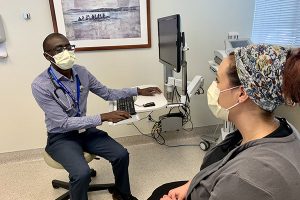 Did you know doctors can have up to 2,000 patients under their care? That’s a lot to keep track of for any human being.
Did you know doctors can have up to 2,000 patients under their care? That’s a lot to keep track of for any human being.
Rather than assuming your doctor will think of everything, it pays to drive your own care. Successful patients work with their doctors as partners in their health care.
We’ve seen successful patients do some creative things to take ownership of their care. See if any of these can improve your trips to the doctor.
Note: In light of the novel coronavirus, be sure to check with your doctor’s office on the best way to seek care—whether for flu-like symptoms or another concern. At PacMed, we offer virtual visits and tools specific to the COVID-19 outbreak.
Prepare
Keep track of symptoms or questions you have. Note the date, time and situation where symptoms show up. Take pictures if needed, and note temperatures or pain levels.
Use a notepad or an app like Evernote to record everything, including your medications. If something seems urgent, use this information when calling your clinic or nurse helpline to see if you should make an appointment, go to an urgent care clinic or visit the emergency room.
Prioritize
As you prepare to see the doctor, organize your most important questions at the top of your list. Tell your scheduler or care team what you want to discuss. This will help them schedule the right type of appointment so you have enough time.
Bring two typed copies of your questions to your appointment. Give the first to your MA or nurse when they show you to the exam room. Ask them to give it to the doctor, to help them get oriented before coming in to see you.
The other copy is for you to consult during your appointment. Go down the list, making sure to cover all your items. Take notes there too, since it’s hard to remember everything. You can invite a friend or family member along to help if needed.
Persist
After your visit, you may have specialist visits, tests or follow-ups to schedule. Make these before you leave the clinic, while it’s fresh in your mind.
Ask how long test results will take and set a reminder to check MyChart. Message your doctor if you need help understanding results when they come in and to find out follow-up steps to take.
Navigating the medical system can be complicated. Taking ownership of your doctor visits is one thing you can do to have a better experience—and better health outcomes.
Let us know if these tips helped you at StayHealthy@pacmed.org.



